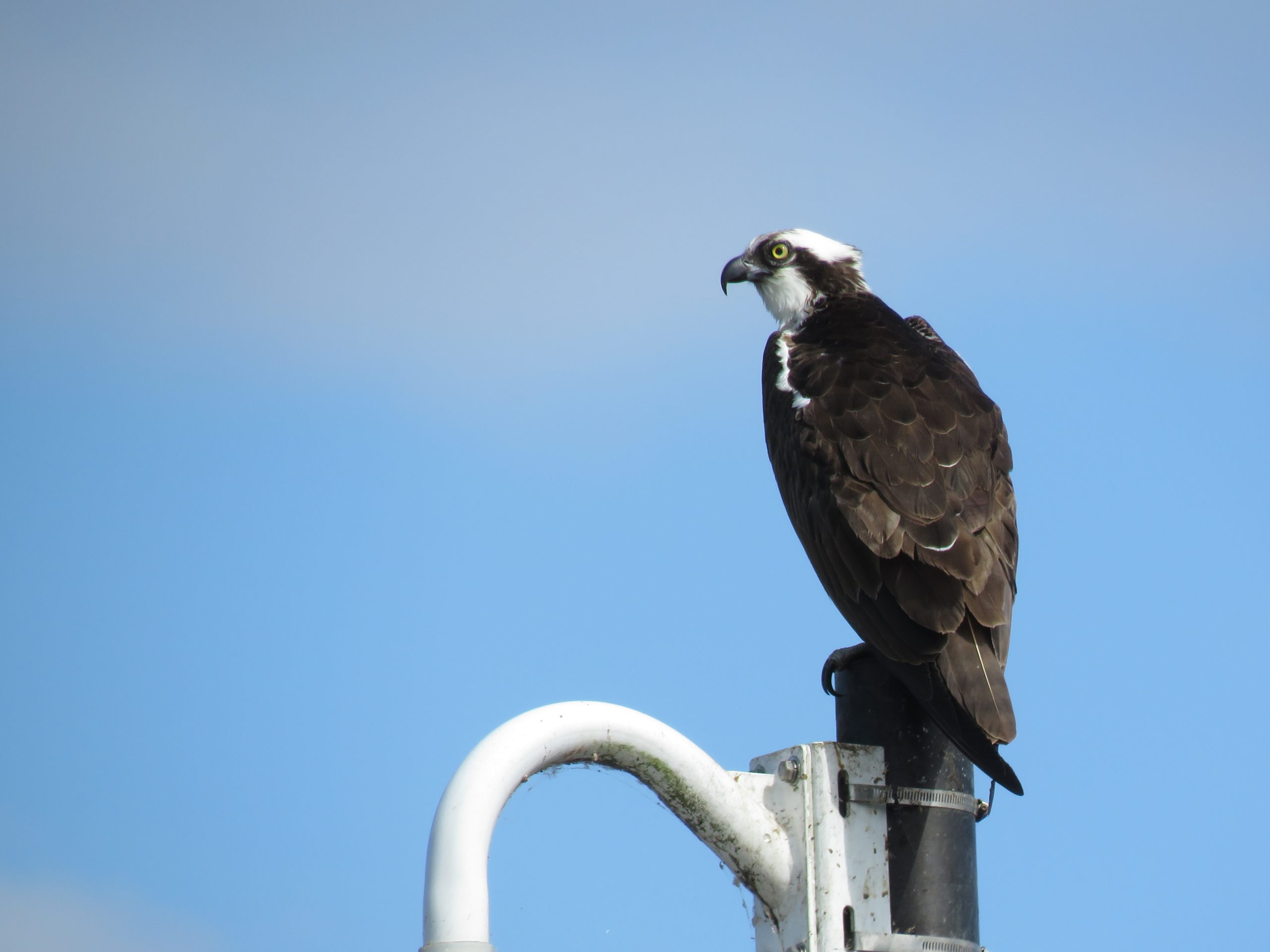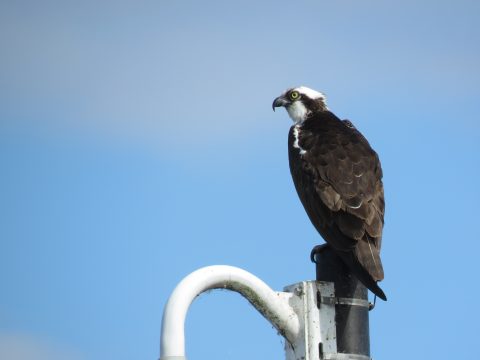Bird of the week: osprey
Bird of the week: osprey
About: A brown-and-white raptor with a thick brown eye band and yellow eyes. They are completely white underneath, with some birds having a brown-speckled breast band.
Where to find this bird: Look for ospreys hunting for fish along the river. They have a high-pitched call which can help detect birds flying overhead.
When to find this bird: April–September.
Fun fact: Ospreys are one of the most widespread raptors and can be found on every continent except Antarctica. They also migrate long distances; some birds fly over 160,000 miles in their 15–20 year life time.
Tipping-point species
As spring migration picks up, I look forward to returning warblers, tanagers, swallows and chimney swifts. Swifts have always amazed me, as they spend most of their time on the wing feeding for insects. Unlike other birds, swifts do not perch, but rather have small legs with large claws suited perfectly to clinging vertically on cave walls, chimneys and hollow trees. However, as I wait for these flight masters to return, I can not help but remember that these birds are disappearing, along with many others, from their breeding grounds across Wisconsin.
In 2019, a study published in the journal Science grabbed headlines with the news that 1 in 4 breeding birds in the U.S. and Canada have been lost — around 3 billion. This includes species from most habitats, with those found in grassland, eastern forest and shorelines the most heavily impacted. In the 2022 State of the Birds report, scientists identified 90 North American bird species that have lost 50% or more of their populations in the last 50 years. Of these, 70 are projected to lose an additional 50% or more in the next 50 years. Among those species impacted are many that breed, migrate or winter in Wisconsin. Some, like the chimney swift and golden-winged warbler, can be found on campus, while others, like bobolinks, breed in more specialized habitats, such as prairie, which can be found close to campus at High Cliff State Park. Others, such as lesser yellowlegs, short-billed dowitchers and stilt sandpipers migrate through, but are becoming ever harder to find as populations decline. When you look at a bird such as the chimney swift with a population of around 7.8 million birds, it may seem unlikely to disappear, but it should be alarming that they are declining at a rate of about 2% every year, according to national Breeding Bird Surveys. If you read last week’s article, you will remember that passenger pigeons went from a population in the billions to being completely extinct in about a century, so this percentage of decline should be alarming if we care to keep these flying wonders around.
Luckily, the latest State of the Birds report was not all doom and gloom. Dabbling duck and goose populations have been increasing thanks to large conservation efforts of wetlands.
Many factors are causing bird declines, from habitat destruction to changes in climate, from pesticides to migration perils such as night lights, but understanding what species are declining and why is key to keeping these beauties of the skies around. As bird lovers, there are many things we can do to help our feathered friends survive in these changing times, which I will discuss in next week’s Twitcher column. If you’re curious about the latest State of the Birds report, I hope you too will read it at stateofthebirds.org.
As I search for the first swifts to return for the summer, I will be making sure I enjoy these feathered friends while I still can, and I will do what I can to help protect their future so we can still have these aerial masters in a hundred years.


